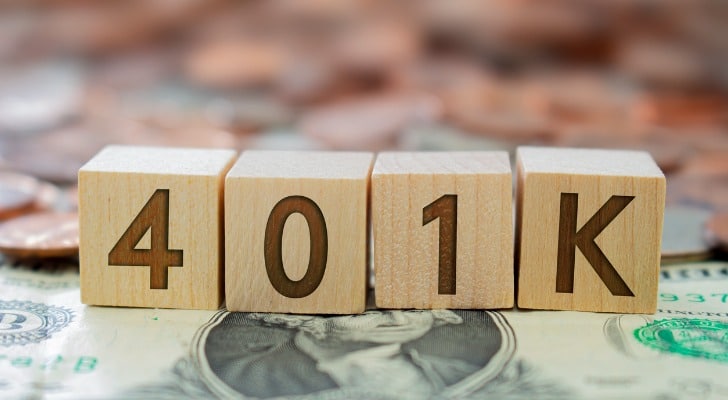
Individuals who contribute $1,000 or more to a 401(k) plan will be entitled to receive an additional $1,000 in benefits this year. The maximum contribution to a 401(k) plan will rise to $20,500 in 2022. There will also be an increase in certain income limits for 401(k) programs.
The following is an explanation of how the 401(k) plan restrictions will change in 2022:
- The maximum contribution to a 401(k) plan is $20,500.
- If you are 50 or older, you may make a catch-up contribution of $6,500 to your 401(k).
- There will be a combined cap of $61,000 for both company and employee contributions.
- This year’s 401(k) contribution maximum will rise to $305,000.
- Individuals will be able to earn $34,000, and couples will be able to earn $68,000, respectively, under the new income limitations.
- When it comes to making retirement planning selections for 2022, keep these new 401(k) guidelines under consideration.
The contribution limit for 401(k) plans in 2022
For 401(k) plans, 403(b) plans, most 457 plans, and the federal government’s Thrift Savings Plan, the contribution maximum will increase to $20,500 in 2022, from $19,500 in 2021. Beginning in 2022, you will be able to take advantage of the increased contribution maximum by increasing your monthly contributions to your 401(k) plan by up to about $83 per month.
The most vital piece of information that workers should have at the start of the year is their maximum allowed contribution. In the next pay period, be sure you update your percentage-based or dollar-based employee deferrals so that your 401(k) is immediately funded.
Traditional 401(k) and after-tax Roth 401(k) accounts may be funded in the same year. But your total 401(k) contributions across all accounts cannot exceed the annual 401(k) contribution maximum. A Roth 401(k) method enables you to contribute even more money to your retirement plan. And this is because, in the end, all of the money saved will become the participant’s property and will not be subject to future deferred taxes.
Distributions from traditional 401(k) plans are subject to taxation when they are taken out of the account. If you deposit more than the contribution maximum, make sure to remove any excess money by April 15 of the year following your contribution. This will help you avoid paying extra taxes and penalties.
The Catch-Up Contribution Limit for 401 (k) Plans in 2022
Employees may make contributions to 401(k) plans over the age of 50 who are entitled to do so. In 2022, the catch-up contribution ceiling will be increased to $6,500. In 2022, older employees who contribute to a 401(k) plan may avoid paying income tax on up to $27,000 of their contributions.
Be aware of your own age if you’ve established a savings cap based on plan maximums, and adjust it accordingly. Once you reach the age of 50, you are eligible to make a maximum contribution of $27,000 to your employer’s 401(k) plan. This may undoubtedly assist in making up for any shortfalls in savings that may exist in a worker’s overall retirement planning approach. To reach the maximum contribution limit of a 401(k), an older worker would need to save $2,250 every month, or $1,125 per biweekly paycheck.
The Employer Contribution Limit for 401(k) Plans in 2022
Even if a 401(k) plan’s contribution limit has been reached, employers may still make contributions on behalf of their workers, both matching and nonmatching. 401(k) plans have an overall contribution maximum of 100% of a participant’s pay, or $61,000 if it is less than that amount. This includes both employer and employee contributions. The total contribution maximum for employees age 50 and older is $67,500, including catch-up payments. The catch-up contribution cap is $2,500.
The 2022 401 (k) Compensation Limit
Highly compensated workers may find that their capacity to make 401(k) contributions is constrained. Employees who earn more than $305,000 in income in 2022 may decide to have their salary deferrals stopped by their 401(k) plan, which can only spend up to this amount when giving a 401(k) match.
A significant benefit for highly compensated employees is the catch-up contribution, which is available to any employee over 50, regardless of their compensation. Unlike their first $20,500 in contributions, which their employer may restrict, the $6,500 catch-up contribution is available to any employee over the age of 50, including highly compensated employees. Because these employees tend to be at higher tax rates, the catch-up contribution might result in a saving of up to 40 cents on every dollar they give.
Learn how to qualify for the Saver’s Credit by using your 401(k) plan to save money
Saving for retirement while earning between $1,000 and $2,000 more each year allows low- and moderate-income individuals and couples to qualify for the saver’s credit, which may be worth up to $1,000 for individuals and $2,000 for couples. Beginning in 2022, the income threshold for the saver’s credit will be raised to $34,000 for individuals, $51,000 for heads of household, and $68,000 for married couples.
401(k) contributions are eligible for a tax credit valued between 10 percent and 50 percent of the amount contributed, up to a maximum of $2,000 for individuals and $4,000 for couples, with the largest benefits given to those with the lowest incomes. If you contribute to a regular 401(k) plan, you may claim the saver’s credit in addition to the tax deduction.
